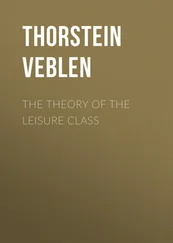The difference between these three racial stocks is much more evident in their physical traits than in their instinctive gifts or their intellectual capacity; and yet the similarity of the three is so great and distinctive even on the physical side that anthropologists are inclined to class the three together as all and several distinctively typical of a “white” or “caucasic” race, to which they are held collectively to belong. Something to the like effect seems to hold true for the distinctive groups of racial stocks that have made the characteristic civilisations of the Far East on the one hand and of southern Asia on the other hand; and something similar might, again, be said for the group of stocks that were concerned in the ancient civilisations of America.
It may be pertinent to add that, except for a long antecedent growth of technology, that is to say a long continued cumulative experience in workmanship, with the resultant accumulated knowledge of the ways and means of life, none of the characteristic races of Europe could have survived. In the absence of these antecedent technological gains, together with the associated growth of institutions, such mutants, with their characteristic gifts and limitations, must have perished.
On that level of savagery on which these European stocks began, and to which the several European racial types with their typical endowment of instincts are presumably adapted, men appear to have lived a fairly peaceable, though by no means an indolent life; in relatively small groups or communities; without any of the more useful domestic animals, though probably with some domestic plants; and busied with getting their living by daily work. Since they survived under the conditions offered them it is to be presumed that these men and women, say of the early neolithic time, took instinctively and kindly to those activities and mutual relations that would further the life of the group; and that, on the whole, they took less kindly and instinctively to such activities as would bring damage and discomfort on their neighbours and themselves. 69Any racial type of which this had not been true, under the conditions known then to have prevailed in their habitat, must have presently disappeared from the face of the land, and the later advance of the Western culture would not have known their breed. Some other racial type, temperamentally so constituted as better to meet these requirements of survival under neolithic conditions, would have taken their place and would have left their own offspring to populate the region. 70
What is known of the conditions of life in early neolithic times 71indicates that the first requisite of competitive survival was a more or less close attention to the business in hand, the providing of subsistence for the group and the rearing of offspring - a closer attention, for instance, than was given to this business by those other rival stocks whom the successful ones displaced; all of which throws into the foreground as indispensable native traits of the successful race the parental bent and the sense of workmanship, rather than those instinctive traits that make for disturbance of the peace. 72But through it all the suggestion insinuates itself that the latest, or youngest, of the three main European stocks, the blond, has more rather than less of the pugnacious and predatory temper than the other two, and that this stock made its way to the front in spite of, if not by force of these traits. The advantage of the blond as a fighter seems to have been due in part to an adventurous and pugnacious temper, but also in part to a superior physique, - superior for the purpose of fighting hand to hand or with the implements chiefly used in warfare and piracy down to a date within the nineteenth century. The same physical traits of mass, stature and katabolism will likewise have been of great advantage in the quest of a livelihood under the conditions that prevailed in the North-sea region, the habitat of the dolicho-blond, in the stone age. Something to the same effect is true of the spiritual traits which are said to characterise the blond, - a certain canny temerity and unrest. 73So that the point is left somewhat in doubt; the traits which presently made the northern blond the most formidable disturber of the peace of Europe and kept him so for many centuries may at the outset have been chiefly conducive to the survival of the type by their serviceability for industrial purposes under the peculiar circumstances of climate and topography in which the race first came up and made good its survival.
In modern speculations on the origins of culture and the early history of mankind it has until recently been usual to assume, uncritically, that human communities have from the outset of the race been entangled in an inextricable web of mutual hostilities and beset with an all-pervading sentiment of fear; that the “state of nature” was a state of blood and wounds, expressing itself in universal malevolence and suspicion. Latterly, students of primitive culture, and more especially those engaged at first hand in field work, who come in contact with peoples of the lower culture, have been coming to realise that the facts do not greatly support such a presumption, and that a community which has to make its own living by the help of a rudimentary technological equipment can not afford to be habitually occupied with annoying its neighbours, particularly so long as its neighbours have not accumulated a store of portable wealth which will make raiding worth while. No doubt, many savage and barbarian peoples live in a state of conven-tional feud or habitual, even if intermittent, war and predation, without substantial inducement in the way of booty. But such communities commonly are either so placed that an easy livelihood affords them a material basis for following after these higher things out of mere fancy; 74or they are peoples living precariously hand-to-mouth and fighting for their lives, in great part from a fancied impossibility of coming to terms with their alien and unnaturally cruel neighbours. 75Communities of the latter class are often living in a state of squalor and discomfort, with a population far short of what their environment would best support even with their inefficient industrial organisation and equipment, and their technology is usually ill-suited to a settled life and unpromising for any possible advance to a higher culture. There is no urgent reason for assuming that the races which have made their way to a greater technological efficiency, with settled life and a large population, must have come up from this particular phase of civilisation as their starting point, or that such a culture should have been favourable to the survival and increase of the leading racial stocks of Europe, since it does not appear to be especially favourable to the success of the communities known to be now living after that fashion. 76The preconception that early culture must have been warlike has not yet disappeared even among students of these phenomena, though it is losing their respect; but a derivative of it still has much currency, to the effect that all savage peoples, as also the peoples of the lower barbarism, live in a state of universal and unremitting fear, particularly fear of the unknown. This chronic fear is presumed to show itself chiefly in religion and other superstitious practices, where it is held to explain many things that are otherwise obscure. There is not a little evidence from extant savage communities looking in this direction, and more from the lower barbarian cultures that are characteristically warlike. 77Wherever this animus is found its effect is to waste effort and divert it to religious and magical practices and so to hinder the free unfolding of workmanship by enjoining a cumbersome routine of ritual and by warning the technologist off forbidden ground. But it is doubtless a hasty generalisation to carry all this over uncritically and make it apply to all peoples of the lower culture, past and present. It is known not to be true of many existing communities, 78and the evidence of it in some ancient cultures is very dubious. Such a characterisation of the neolithic culture of Europe, whether north-European or Aegean, finds no appreciable support in the archaeological evidence. These two regions are the most significant for the neolithic period in Europe, and the material from both is relatively very poor in weapons, as contrasted with tools, on the one hand, and there is at the same time little or nothing to indicate the prevalence of superstitious practices based on fear. Indeed, the material is surprisingly poor in elements of any kind that can safely be set down to the account of religion or magic, whether as inspired by fear or by more genial sentiments. It is one of the puzzles that beset any student who insists on finding everywhere a certain normal course of cultural sequence, which should in the early times include, among other things, a fearsome religion, a wide fabric of magical practices, and an irrepressible craving for manslaughter. And when, presently, something of a symbolism and apparatus of superstition comes into view, in the late neolithic and bronze ages, the common run of it is by no means suggestive of superstitious fear and religious atrocities. The most common and characteristic objects of this class are certain figurines and certain symbolical elements suggestive of fecundity, such as might be looked for in a peaceable, sedentary, agricultural culture on a small scale. 79A culture virtually without weapons, whose gods are mothers and whose religious observances are a ritual of fecundity, can scarcely be a culture of dread and of derring-do.
Читать дальше












